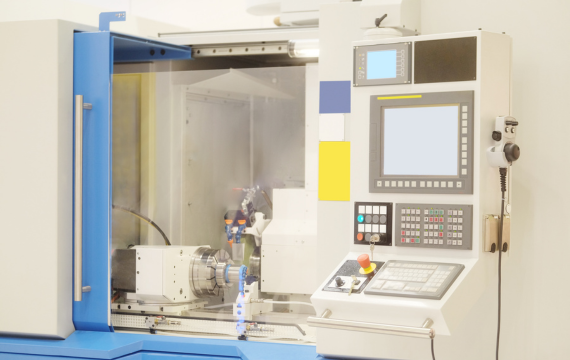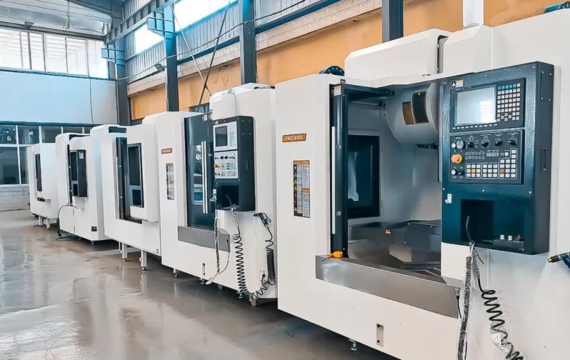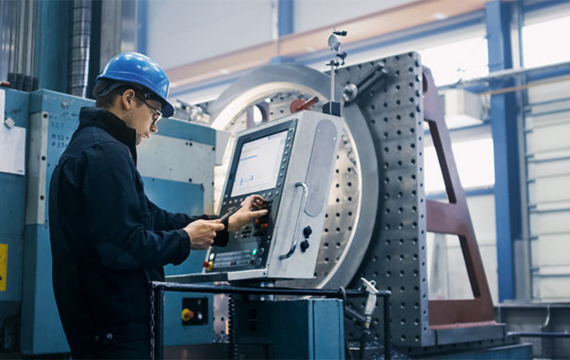Definition and Purpose of Computer Numerical Control
CNC means Computer Numerical Control. It is a system used in the automation of machine tools. CNC machines can perform cutting, drilling, and other operations with a high level of accuracy through computer software. The primary reason behind CNC is to enhance the precision of the method that is followed in producing products.

Main Components of CNC Systems
Understanding CNC systems involves knowing their key components:
- Controller: This is the core of a CNC machine. It shows the digital design from the computer and then converts the design into movements which the machine can follow. It should be noted that the controller guarantees that the machine works to the specified requirements to produce the result that is required.
- Drive Motors: Such motors are used to rotate the various parts of the machine such as the spindle and tool holder. Drive motors also provide smooth movements since they translate a signal received from the controller into a mechanical response. They are very essential in achieving the precise positioning and movements needed for various activities.
- Spindle: Spindle is a rotative part which supports and actively drive the cutting tool or the work piece. It does the cutting, drilling, or shaping functions. The spindle speed as well as the rotation direction is regulated by the CNC system to satisfy the needs of a particular job.
- Feedback Systems: Such systems include position and performance feedback systems such as the sensors and encoders. They feed the current data to the controller so that adjustments and rectifications can be made in case of any variation. Feedback systems are very important tools for keeping track of accuracy and for avoiding mistakes in the machining processes.
How CNC Machines Work
CNC machines work similarly to computerized numerically controlled machines, but they are operated by a computer. The process begins with programming, where a part is created using Computer Aided Design (CAD) tools. This design is translated into a special code called G-code, which contains precise directions for the CNC machine.
During execution, the CNC controller manages the position of components, translating the G-code to adjust or elevate spindles, tool holders, and other parts that interact with the work. Feedback and adjustment systems provide information to monitor the machine, with data sent back to the controller for real-time adjustments if something is not right.

Types of CNC Machines
CNC machines come in various types, each with unique features and uses. Some of them are:
- CNC Mills: These machines employ a cutter that rotates while shaving or cutting material off a workpiece. They are able to perform several operations including drilling, boring as well as milling hence; they are suitable for manufacturing.
- CNC Lathes: In CNC lathes the workpiece is rotated and a tool which is at a rest keeps on cutting the workpiece in a successive manner. They are mostly used in the generation of rotational components such as; Shafts and Pipes. In this way, the rotation helps in proper and accurate modeling of the material.
- CNC Routers: These are equipments that are employed for purposes of slicing such items as timber, polymers, and metals. CNC routers are mostly used for cutting intricate designs and carving, especially on wood and for making signs.
- CNC Plasma Cutters: CNC Plasma Cutters uses a high temperature plasma featuring stream to cut through metals. They are ideal for cutting thick pieces of metal and they are often used in the metalworking industry.
Common CNC Operations
CNC machines can perform several operations, including:
- Milling: This is carried out by cutting or otherwise reducing thickness, width, depth, or size of a workpiece to obtain flat and other kinds of surfaces. In an attempt to obtain the desired shape, a milling cutter is performed in different directions across the material.
- Turning: Machining on the other hand involves the workpiece rotating while the cutter held in a fixed position makes contact with the object to be cut. This is used with the aim of achieving cylindrical products and can be implemented in manufacturing parts like rods and tubes.
- Drilling: Drilling operations make holes on the workpiece. The drill bit moves into the rotating material, producing holes of various sizes and depths.
- Engraving: Engraving adds detailed designs or text to the surface of a material. The cutting tool moves precisely to carve out the desired patterns, making it suitable for decorative and identification purposes.

Applications of CNC Technology in Various Industries
CNC technology is used in many industries for different purposes:
- Manufacturing: In manufacturing, CNC products include components for machinery and equipment. They are very important in production especially in creating components with tight tolerances and uniformity.
- Automotive: CNC machines fabricate such parts as gears, shaft and bearings that are used in automobiles among other uses. These parts should be of high performance because they influence the right functioning of the vehicle.
- Aerospace: In the aerospace industry, CNC plays an integral role in manufacturing aircraft parts requiring accuracy. These components have to meet the required standards of safety and performance.
- Woodworking: Wood lathes and routers are used in making intricate and aesthetical designs in furniture and other decorative materials. Advanced technology; CNC helps in the ability to create patterns and shapes that are complex.
- Prototyping: CNC machines are very important in the process of designing and prototyping of new products. They enable designers and engineers to fashion and develop models that can be taken through mass production.
Benefits of Using CNC Technology
CNC technology offers several advantages. Increased precision is one of the key benefits, as CNC machines provide high accuracy in production, making it easy to produce parts with minimal mistakes. Efficiency follows closely, with CNC automation reducing time because it works faster and in the same manner as required, leading to quicker production and less workload while boosting efficiency.
Repeatability is another advantage, as CNC machines produce very accurate results, ensuring that parts of similar quality come out of the machine, which is essential for maintaining quality in large quantities. Finally, automation plays a significant role, as CNC systems enable the automation of operations, reducing the need for human intervention, which simplifies the process, saves time, and guarantees accuracy.
FAQs
- What Should I Consider When Selecting the Right CNC Machine?
Identify the type of material that will work, the extent of work to be carried out and the size of the machine needed. Then it should be noted that the various types of CNC are made for the utilization in the several processes.
- How does CNC contribute to improved production processes?
CNC brings in efficiency in the production line by reducing manual inputs and ensures there is a uniform flow of material from input to output.
- What are Some of the Essential Aspects of CNC Machines’ Maintenance?
Maintenance included washing of the machine, checking for signs of wear and tear and ensuring that all functions of the component were fully functional.




